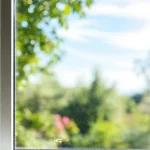Key considerations for choosing the best swimming pool location in a UK garden
When selecting a swimming pool location UK homeowners must weigh several important factors to achieve optimal pool placement. The UK’s temperate climate poses unique challenges. For instance, choosing a site with ample sunlight exposure maximises warmth and usability. Pools placed in shaded spots can feel cold, especially during the UK’s shorter, cooler days. Assessing sunlight throughout the year is crucial for comfort.
The garden’s layout and size directly influence placement options. A spacious, flat area with stable soil is ideal to prevent costly structural issues later. Ground conditions in the UK can vary widely; poor drainage or proximity to tree roots may lead to pool damage or waterlogging, compromising longevity. UK garden pool advice strongly recommends a thorough ground survey.
Also to discover : How can landscaping complement your UK swimming pool design?
Additionally, considering wind direction helps reduce debris accumulation, an everyday maintenance concern. Accessibility for installation equipment and ongoing pool care is another key factor. Locating the pool near utilities such as water and electricity can simplify setup and reduce costs.
Overall, successfully choosing a pool site in the UK hinge on balancing climate impact, garden specifics, and practical needs to enjoy a safe, thriving swimming space throughout the seasons.
In parallel : What are the top water features to enhance your UK home pool?
Essential privacy and safety factors
When considering swimming pool privacy in a UK garden, strategic placement can enhance seclusion and comfort. Planting hedges, installing fences, or using privacy screens are common methods to maintain discretion, especially in densely populated areas. These solutions ensure peace of mind for pool users without compromising the garden’s aesthetics.
Pool safety UK regulations require strict compliance to prevent accidents. Installing barriers such as self-closing gates and secure fencing is legally mandated around most pools. These measures are essential to block unsupervised access, especially for children. Positioning the pool for good visibility from the house facilitates effective supervision.
Emergency access is another critical element. Clear paths must lead to the pool area for quick intervention if needed. Additionally, UK garden pool advice stresses avoiding locations difficult for emergency personnel to reach or to operate equipment in case of incidents.
Combining these elements—privacy structures, safety barriers, and accessible supervision—supports both enjoyment and legal compliance. This integrated approach to swimming pool privacy and pool safety UK ensures owners meet obligations while creating a secure environment where everyone can relax confidently.
Practical garden and environmental considerations
Selecting an ideal swimming pool location UK requires careful attention to garden and environmental factors to ensure durability and ease of maintenance. One major concern is avoiding proximity to trees. Roots can penetrate pool foundations or piping, causing structural damage. Moreover, falling leaves from trees increase cleaning demands, impacting overall pool upkeep.
Drainage is another critical consideration, particularly in the UK’s often wet climate. Proper site evaluation should confirm that rainwater does not accumulate near or around the pool, which can lead to waterlogging or damage. Incorporating effective drainage solutions like French drains or soakaways helps manage runoff and protects the pool’s structural integrity.
Additionally, placing the pool near garden utilities such as water supply and electricity connections simplifies installation and ongoing maintenance. Convenient utility access reduces costs and installation delays. These environmentally aligned decisions are part of essential UK garden pool advice focused on practical, sustainable pool ownership.
By balancing climate impact, ground conditions, and accessibility, homeowners can maximise both pool longevity and enjoyment, ensuring the swimming pool enhances the garden without posing avoidable risks related to roots, drainage, or infrastructure challenges.
Understanding UK planning permissions and legal requirements
Navigating UK pool planning permission is vital to ensure your swimming pool project proceeds smoothly. Generally, most garden pools are classed as permitted developments, meaning they don’t require formal planning permission if they meet specific size and placement criteria. However, this varies by council and if your pool is close to property boundaries or in protected zones, permissions are often needed.
A key question: What are the main garden pool legalities to consider? First, check local building regulations and council guidelines, as ignoring these can lead to costly fines or removal orders. Drainage rules are particularly important in the UK; new pools must not cause flooding to neighbouring properties. Assessing flood risk based on your area is essential before installation.
Working with qualified professionals experienced in UK standards guarantees compliance. They help with submitting applications, ensuring the pool design meets safety, environmental, and construction codes. This expert guidance reduces delays and legal complications.
Understanding these regulations upfront supports confident planning and protects your investment, blending legal adherence with your garden’s needs.
Key considerations for choosing the best swimming pool location in a UK garden
Choosing the right swimming pool location UK involves balancing climate, garden characteristics, and practical factors to achieve optimal pool placement. The UK’s variable weather means assessing sunlight exposure carefully. Pools positioned to maximise direct sunlight will have warmer water and longer usability, especially critical during cooler months. Conversely, shaded spots can make the pool less inviting and risk colder water temperatures.
Evaluating the garden layout and size is crucial. A flat, unobstructed area simplifies construction and reduces the risk of structural challenges. Ground conditions matter: soil stability supports the pool’s foundation and controls drainage. For example, heavy clay soils may retain water, causing pooling or damage. UK garden pool advice strongly suggests a soil survey before finalising location.
Furthermore, consider how surrounding features, like fences or hedges, impact both sunlight and privacy without compromising space. Accessibility for construction and maintenance equipment is another key consideration.
A thoughtful approach to these factors ensures your pool integrates well with the garden environment and performs effectively throughout the year, maximising enjoyment and reducing long-term upkeep challenges.
Key considerations for choosing the best swimming pool location in a UK garden
Selecting the ideal swimming pool location UK hinges on understanding the local climate’s influence on usability. The UK’s often unpredictable weather demands prioritising maximal sunlight exposure to keep pool temperatures comfortable. Ideally, an area receiving direct sunlight for most of the day, particularly in spring and autumn, ensures extended pool use. Shadows from buildings or trees should be carefully mapped across seasons to avoid chilly, shaded conditions that reduce enjoyment.
Evaluating the garden layout is another cornerstone of optimal pool placement. The available space must accommodate the pool size while allowing room for access paths and safety barriers. Compact gardens require creative layouts to balance pool dimensions with leisure areas.
Soil and ground conditions profoundly affect pool longevity. Stable, well-draining soil prevents water pooling and foundation issues, crucial in the wetter UK climate. Conducting tests on soil texture and drainage aligns with recommended UK garden pool advice and helps avoid costly repairs linked to poor site choice.
In essence, harmonising climate factors, garden structure, and ground integrity promotes a smart, functional swimming pool location tailored for UK settings.










